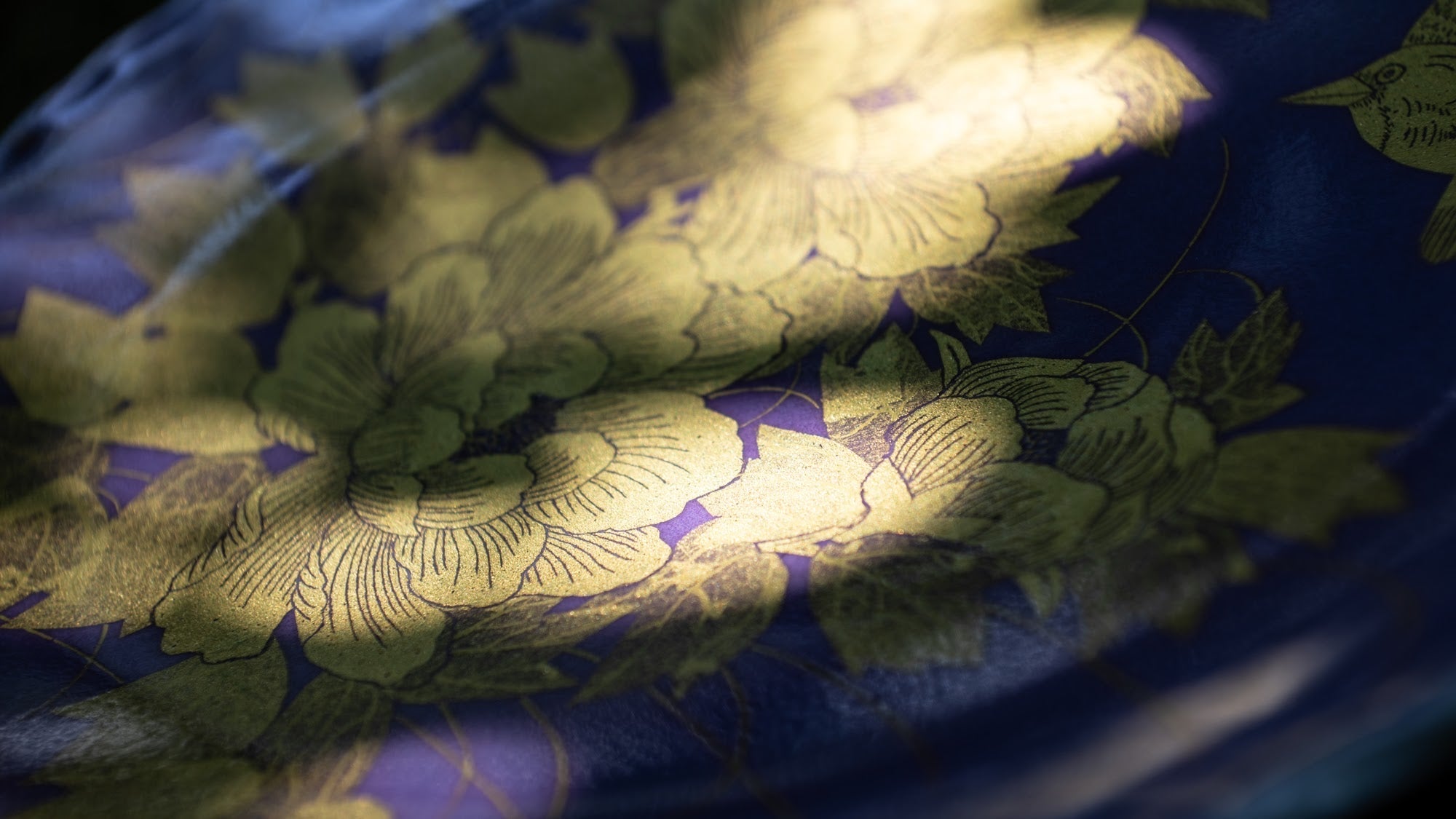





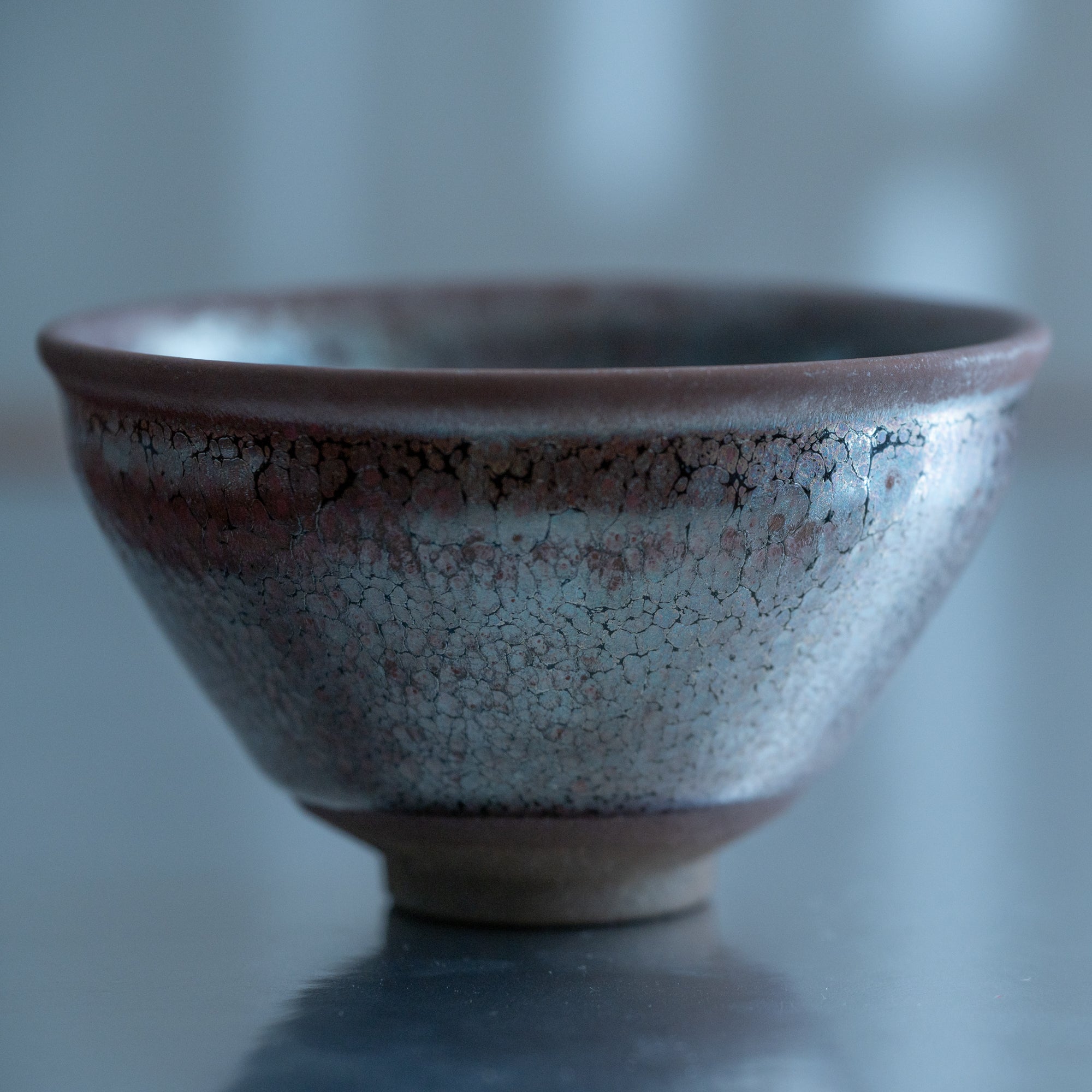


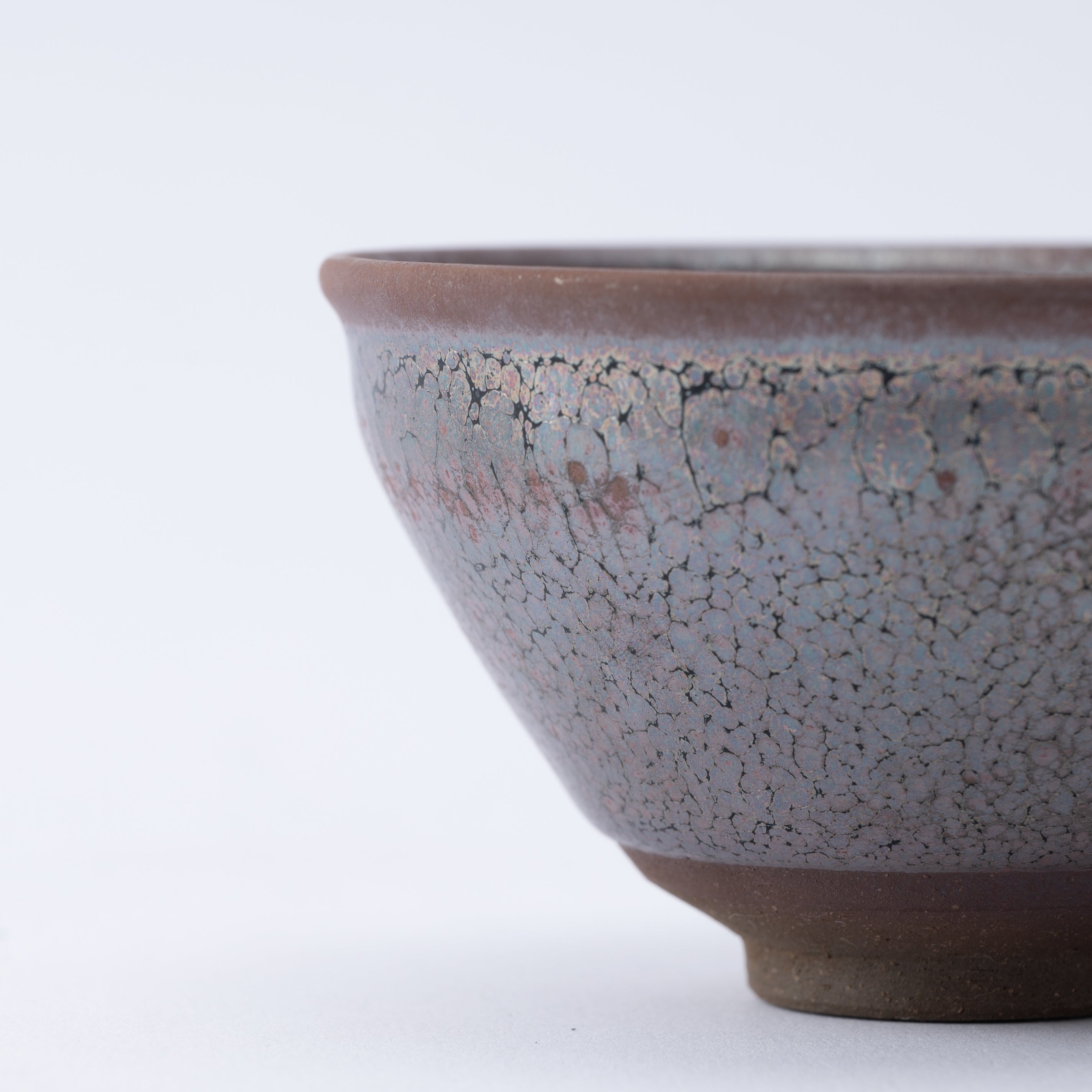
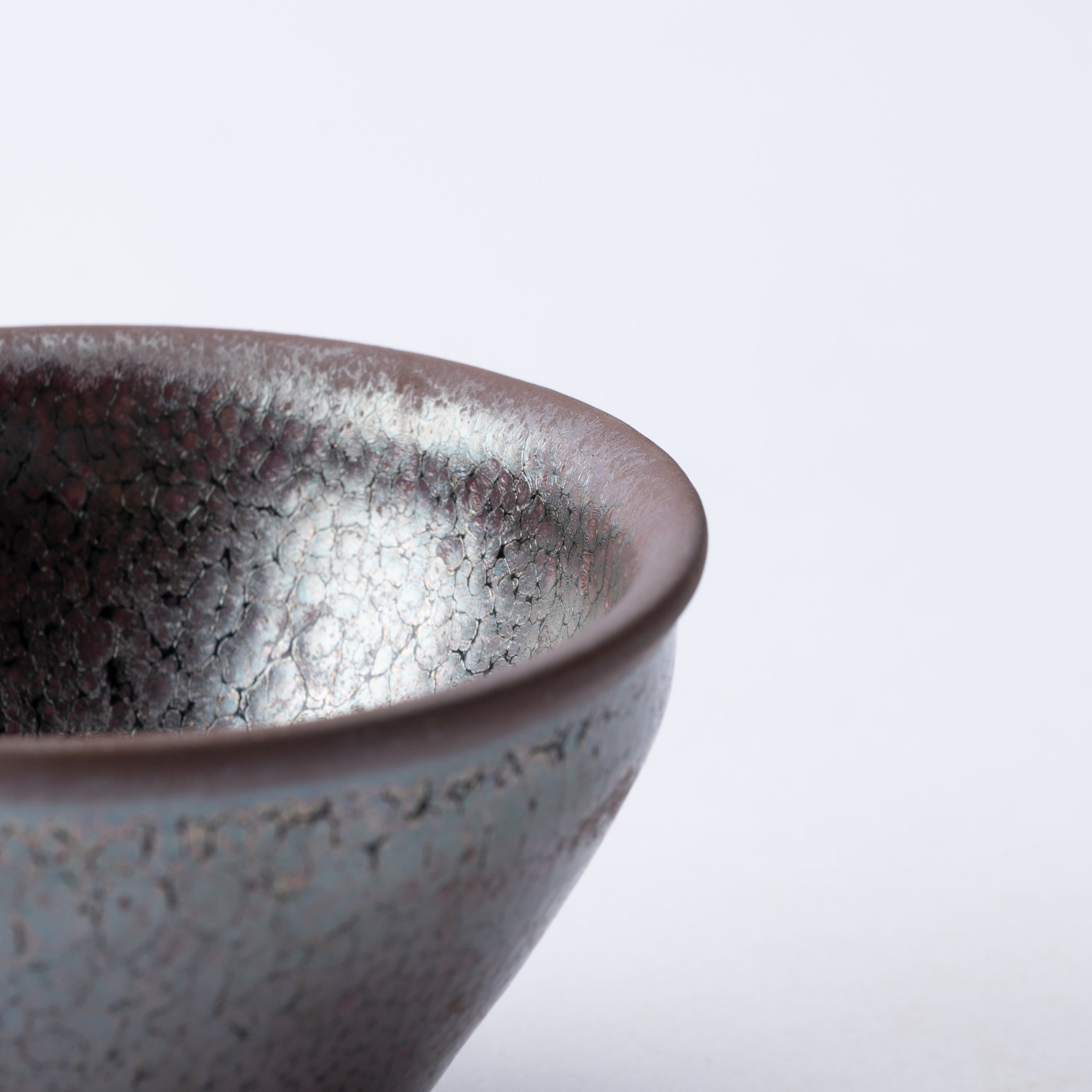
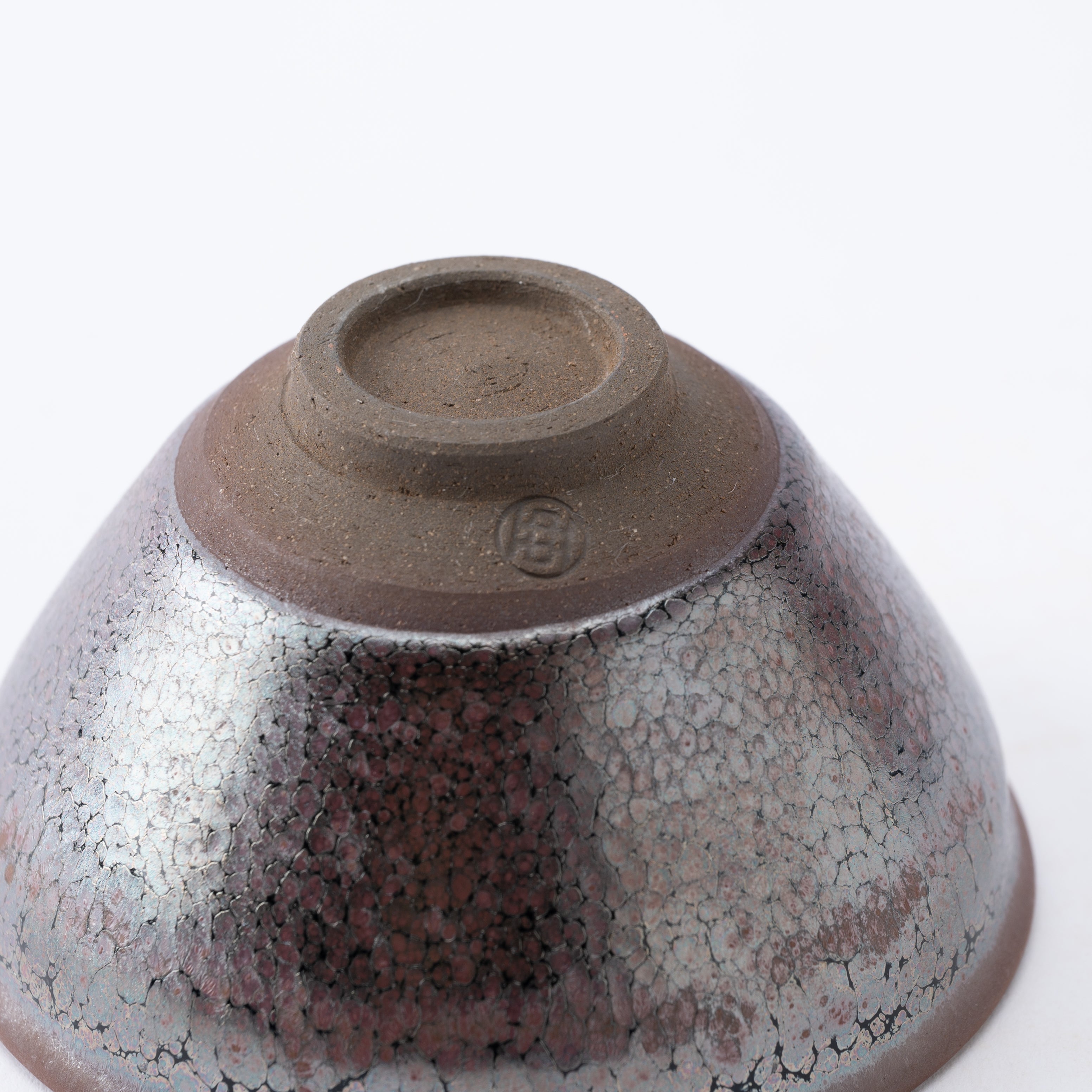







Yuteki Tenmoku Sake Cup
Wie verstreute Öltropfen, die auf Wasser schimmern, enthüllt der Yuteki Tenmoku Sake Cup ein faszinierendes Muster aus silbernen Flecken auf einer tiefschwarzen Oberfläche. Diese Glasur, auch bekannt als Ölfleckglasur, stammt aus einem Brennofen der Südlichen Song-Dynastie in China vor über 800 Jahren. tenmoku, hat mit seiner feinen Balance aus Dunkelheit und Licht Kunsthandwerker und Sammler gleichermaßen fasziniert. Der Keramikmeister Dobuchi Yoshiaki hat diese Technik studiert und verfeinert und haucht so einer alten Tradition neues Leben ein.
Das komplexe Muster entsteht durch die Reaktion der eisenhaltigen Glasur mit Hitze, wodurch winzige Bläschen auf der Oberfläche entstehen. Wenn diese platzen und kristallisieren, hinterlassen sie eine Ansammlung metallischer Flecken, die alle durch Zufall und Feuer geformt wurden. Schichten präzise gemischter Glasur verstärken den Effekt noch weiter und erzeugen eine Oberfläche, die fast flüssig erscheint – je nach Lichteinfall changiert sie zwischen sanftem Glanz und tiefen Schatten.
Subtil und doch bewusst umrahmt der leicht erhöhte Doppelrand die himmlische Weite in der kleinen Tasse. Dieses Detail spiegelt Dobuchis Hingabe an Form und Schönheit wider, eine ruhige Verfeinerung, die die Tasse über das Wesentliche hinaushebt.Ob in der Hand gehalten oder still ausgestellt, es lädt aus jedem Blickwinkel zur Bewunderung ein.
DETAILS
| Quantity | 1 |
| Size | D 8.6 cm (3.4 in) x H 5.1 cm (2.0 in) |
| Capacity | 70 ml (2.4 fl oz) |
| Weight | 110 g (3.9 oz) |
| Material | Stoneware |
| Package Type | Wooden box |
| Microwave | No |
| Dishwasher | No |
Maker / Brand
Dobuchi Yoshiaki, der Leiter von Kyotos Touan in vierter Generation, ist spezialisiert auf tenmoku: Eine uralte Technik, die in der Keramik seit langem für ihre Tiefe und Komplexität geschätzt wird. Tenmoku hat Generationen von Töpfern mit seiner reflektierenden Oberfläche, der markanten schwarzen Glasur und den komplizierten Mustern inspiriert. Dobuchis Arbeiten spiegeln sowohl technische Meisterschaft als auch künstlerische Vision wider. Jedes Stück ist in der Vergangenheit verwurzelt und baut gleichzeitig eine frische kreative Zukunft auf.
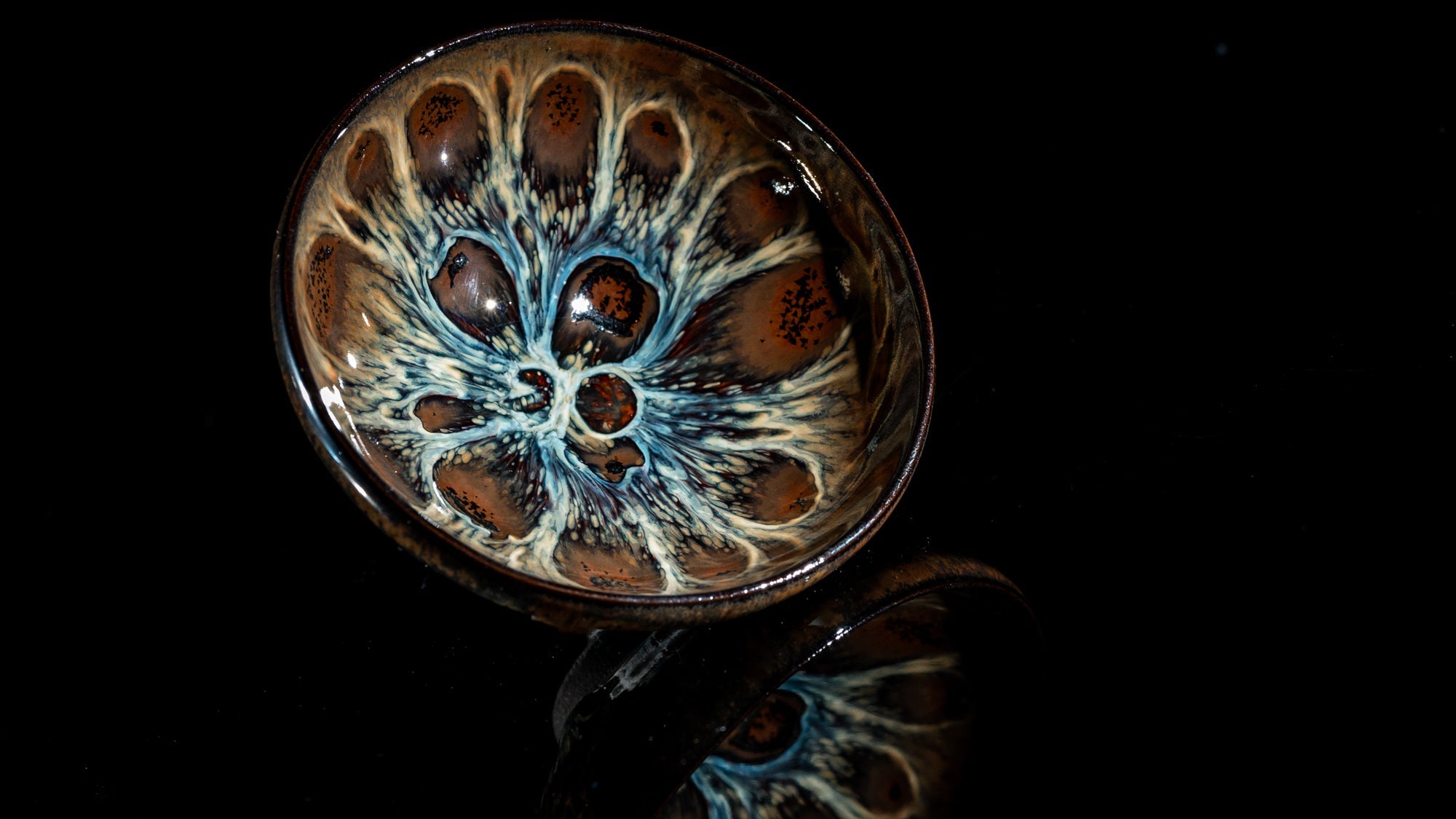
Crafts
Kyo- und Kiyomizu-Ware, zusammen als Kyo-yaki und Kiyomizu-yaki bekannt, sind berühmte Keramikstile aus Kyoto. Bekannt für ihr lebendiges Design, ihre fein geformten Formen und die Liebe zum handwerklichen Detail, spiegeln diese Waren Kyotos unverwechselbaren Sinn für Schönheit und künstlerische Raffinesse wider.
Kyo- und Kiyomizu-Ware zeichnen sich durch eine lange gepflegte Vielfalt aus und greifen auf Techniken und Stile der Töpfertraditionen Japans zurück. So entwickelte sich eine ausdrucksstarke und typisch Kyoto-Kunstform. 1977 als traditionelles japanisches Kunsthandwerk anerkannt, werden sie bis heute wegen ihrer kulturellen Tiefe und Alltagstauglichkeit geschätzt.

Optionen auswählen
About Artist
Musubi-Galerie
Seit seiner Gründung Musubi Kiln hat sich zum Ziel gesetzt, der Welt die feinsten traditionellen Handwerkskünste von Meistern aus ganz Japan vorzustellen.
Hier in der Galerie präsentieren wir Ihnen die höchste Stufe traditioneller Techniken, die über Generationen weitergegeben wurden. Entdecken Sie Werke von Meistern, die diese Methoden nicht nur perfektioniert, sondern mit ihrer Fantasie das Handwerk noch weiter verbessert haben.
Einige dieser Meister wurden sogar zu „Lebenden Nationalschätzen“ ernannt. Dieser Titel wurde ihnen von der japanischen Regierung verliehen, um ihren Beitrag zum Kunsthandwerk und zur Kultur offiziell anzuerkennen. Dadurch wurde ihr Erbe gefestigt und sie wurden zu einem wichtigen Teil der Kunstgeschichte.
Jedes Stück wird über viele Monate hinweg sorgfältig von Hand gefertigt, um einen zeitlosen Schatz zu schaffen, der seinesgleichen sucht. Und wenn es bei Ihnen zu Hause steht, werden auch Sie Teil dieser Geschichte.
Willkommen in der Galerie. Schauen Sie sich in Ruhe um.
